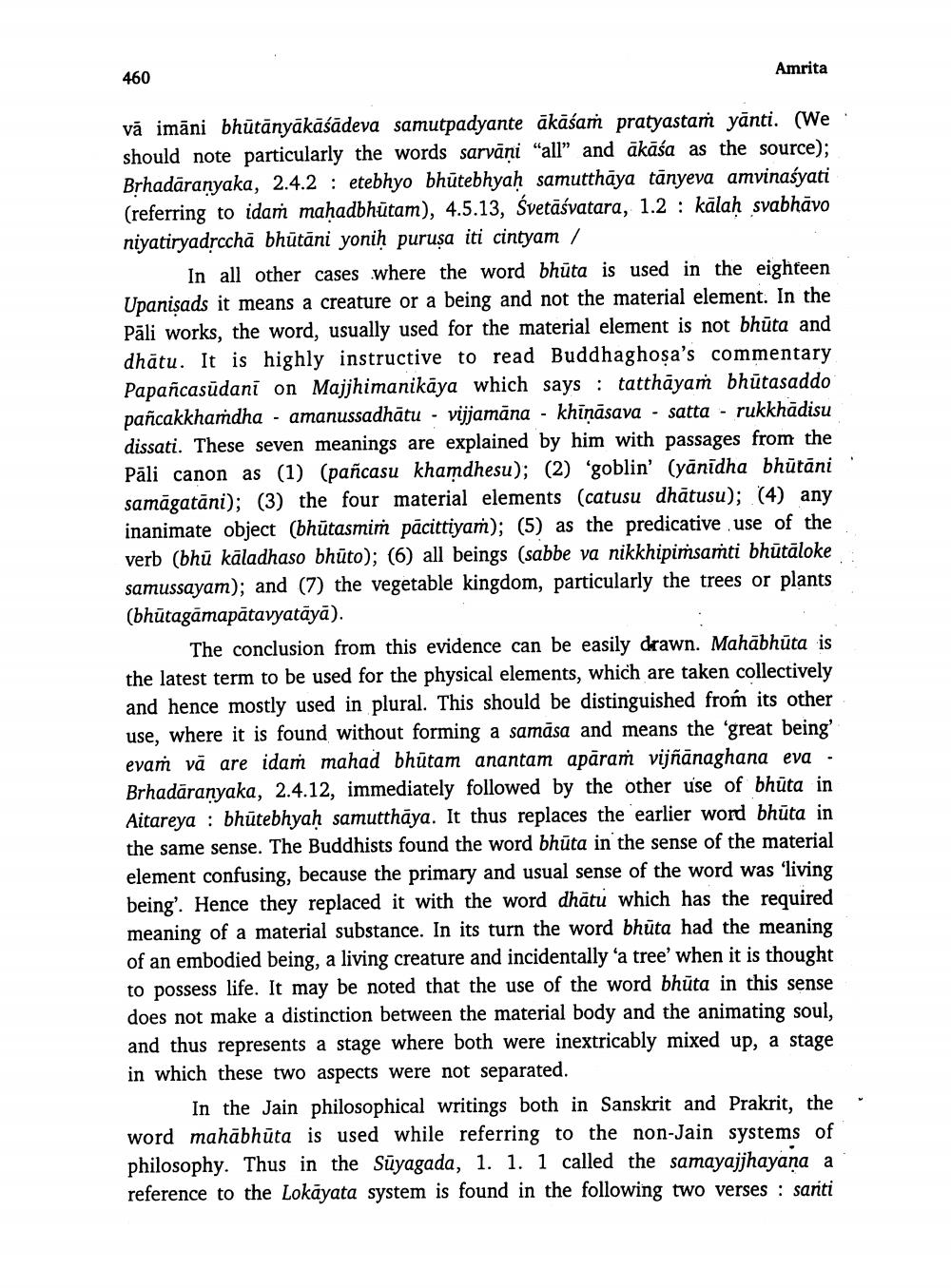________________
460
Amrita
vă imāni bhūtānyākāśādeva samutpadyante ākāśam pratyastam yānti. (We should note particularly the words sarvāni “all” and ākāśa as the source); Brhadāranyaka, 2.4.2 : etebhyo bhūtebhyaḥ samutthāya tānyeva amvinaśyati (referring to idam mahadbhūtam), 4.5.13, Svetāśvatara, 1.2 : kālah svabhāvo niyatiryadrcchā bhūtāni yoniḥ puruşa iti cintyam /
In all other cases where the word bhūta is used in the eighteen Upanisads it means a creature or a being and not the material element. In the Pāli works, the word, usually used for the material element is not bhūta and dhātu. It is highly instructive to read Buddhaghosa's commentary Papañcasüdani on Majjhimanikāya which says : tatthāyam bhūtasaddo pancakkhardha - amanussadhātu - vijjamāna - khiņāsava - satta - rukkhādisu dissati. These seven meanings are explained by him with passages from the Pāli canon as (1) (pañcasu khamdhesu); (2) goblin' yanidha bhutani samāgatāni); (3) the four material elements (catusu dhātusu); (4) any inanimate object (bhūtasmim pācittiyam); (5) as the predicative use of the verb (bhū kāladhaso bhūto); (6) all beings (sabbe va nikkhipimsasti bhūtāloke samussayam); and (7) the vegetable kingdom, particularly the trees or plants (bhūtagamapātavyatāyā).
The conclusion from this evidence can be easily drawn. Mahābhūta is the latest term to be used for the physical elements, which are taken collectively and hence mostly used in plural. This should be distinguished from its other use, where it is found without forming a samāsa and means the great being' evaṁ vă are idaṁ mahad bhūtam anantam apāraṁ vijñanaghana eva - Brhadāranyaka, 2.4.12, immediately followed by the other use of bhūta in Aitareya : bhūtebhyah samutthāya. It thus replaces the earlier word bhūta in the same sense. The Buddhists found the word bhūta in the sense of the material element confusing, because the primary and usual sense of the word was 'living being'. Hence they replaced it with the word dhātu which has the required meaning of a material substance. In its turn the word bhūta had the meaning of an embodied being, a living creature and incidentally 'a tree' when it is thought to possess life. It may be noted that the use of the word bhūta in this sense does not make a distinction between the material body and the animating soul, and thus represents a stage where both were inextricably mixed up, a stage in which these two aspects were not separated.
In the Jain philosophical writings both in Sanskrit and Prakrit, the word mahābhūta is used while referring to the non-Jain systems of philosophy. Thus in the Süyagada, 1. 1. 1 called the samayajjhayana a reference to the Lokāyata system is found in the following two verses : santi




